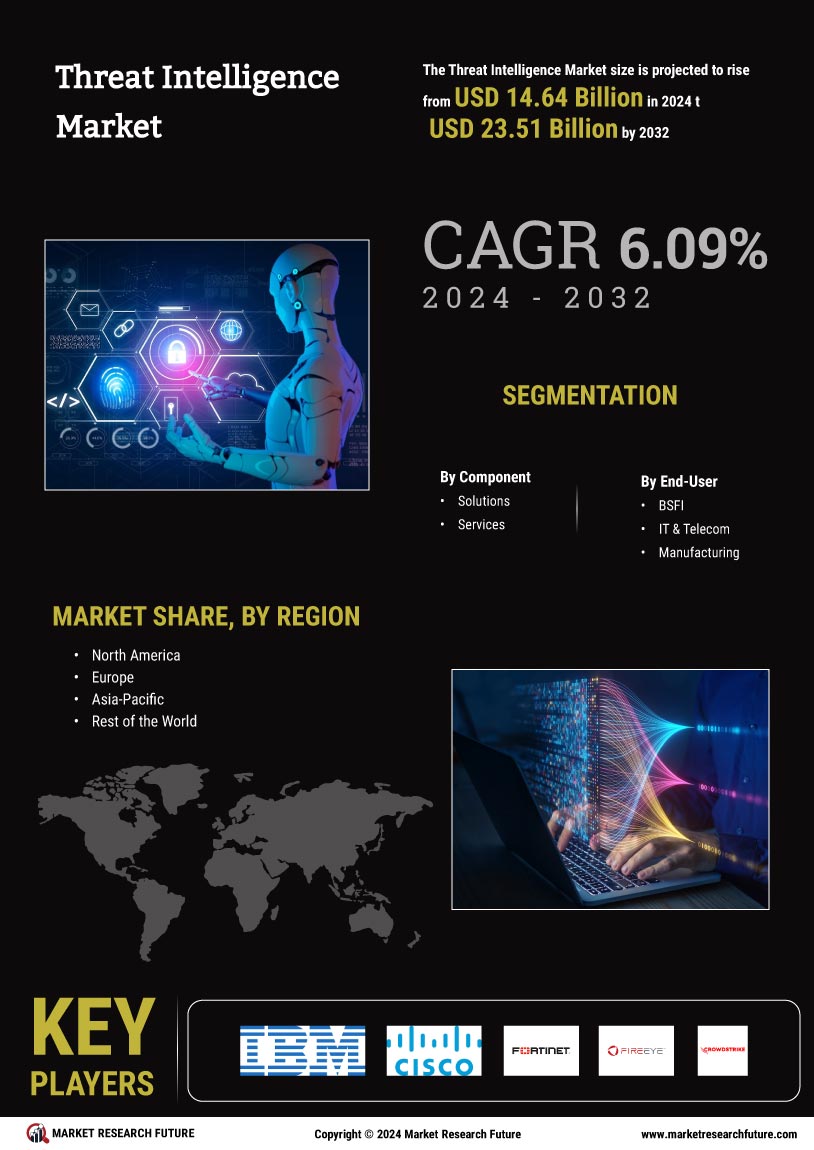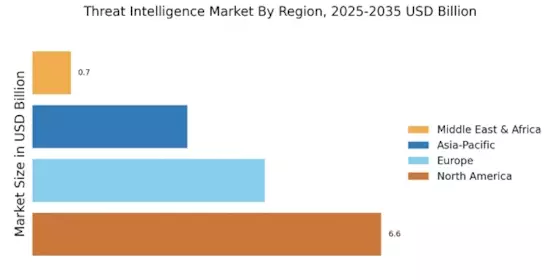Rising Cybersecurity Threats
The Threat Intelligence Market is experiencing a surge in demand due to the increasing frequency and sophistication of cyber threats. Organizations are facing a myriad of challenges, including ransomware attacks, data breaches, and advanced persistent threats. According to recent data, the global cost of cybercrime is projected to reach trillions of dollars annually, compelling businesses to invest in robust threat intelligence solutions. This heightened awareness of cybersecurity risks drives organizations to seek proactive measures, thereby propelling the growth of the Threat Intelligence Market. As companies recognize the necessity of real-time threat detection and response, the market is likely to expand further, with a focus on integrating advanced technologies to enhance security posture.
Regulatory Compliance Requirements
The Threat Intelligence Market is significantly influenced by the evolving landscape of regulatory compliance. Organizations are increasingly required to adhere to stringent regulations regarding data protection and cybersecurity. For instance, regulations such as the General Data Protection Regulation (GDPR) and the Health Insurance Portability and Accountability Act (HIPAA) mandate that businesses implement effective threat intelligence measures to safeguard sensitive information. Failure to comply can result in substantial fines and reputational damage. Consequently, the demand for threat intelligence solutions that assist in meeting these compliance requirements is on the rise. This trend indicates a growing recognition of the importance of threat intelligence in maintaining regulatory compliance and protecting organizational assets.
Integration of Advanced Technologies
The integration of advanced technologies such as artificial intelligence and machine learning is transforming the Threat Intelligence Market. These technologies enable organizations to analyze vast amounts of data and identify potential threats more efficiently. By leveraging AI-driven analytics, businesses can enhance their threat detection capabilities and respond to incidents in real-time. The market for AI in cybersecurity is expected to grow significantly, with estimates suggesting it could reach billions of dollars in the coming years. This technological advancement not only improves the effectiveness of threat intelligence solutions but also fosters innovation within the industry, driving further investment and development.
Increased Investment in Cybersecurity
The Threat Intelligence Market is witnessing a notable increase in investment as organizations prioritize cybersecurity. With the rising costs associated with cyber incidents, businesses are allocating larger budgets to enhance their security frameworks. Reports indicate that global spending on cybersecurity is projected to exceed hundreds of billions of dollars, reflecting a strong commitment to safeguarding digital assets. This trend is likely to continue as organizations recognize the critical role of threat intelligence in mitigating risks. The influx of capital into the market is expected to spur innovation and the development of more sophisticated threat intelligence solutions, ultimately benefiting organizations seeking to bolster their defenses.
Growing Awareness of Cybersecurity Risks
The growing awareness of cybersecurity risks among organizations is a key driver of the Threat Intelligence Market. As high-profile data breaches and cyberattacks make headlines, businesses are becoming increasingly cognizant of the potential threats they face. This heightened awareness is prompting organizations to invest in threat intelligence solutions to better understand and mitigate risks. Surveys indicate that a significant percentage of companies are prioritizing cybersecurity initiatives, with many considering threat intelligence as a vital component of their security strategy. This trend suggests that as awareness continues to rise, the demand for threat intelligence services will likely expand, further solidifying the industry's importance in the cybersecurity landscape.


















Leave a Comment